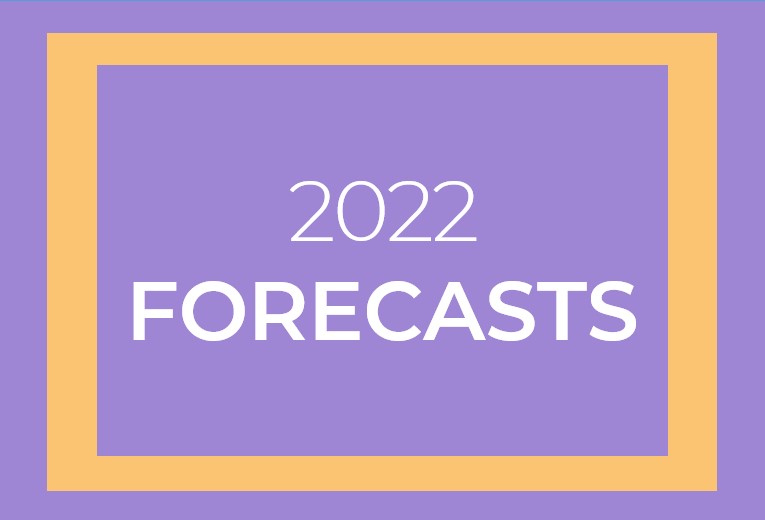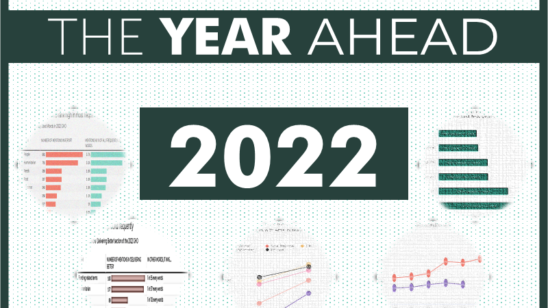
2022 Forecasts: Year Ahead for Humanitarian Sectors5 min read
Launching a website that forecasts humanitarian funding in 2021 was slightly tricky, to say the least. The coronavirus pandemic created disruption in the global economy, and donors were by no means immune from the effects of this. The model we created to forecast funding in 2021 was based on a system of humanitarian funding that existed in a (relative) economic sea of tranquillity in the 2010s. Thus, using a model based on these years to forecast in years of economic turmoil may have led to the model being slightly off in some respects.
But the last two years gave us an opportunity to learn how the system behaves in years of turmoil. We’ll do a full postmortem and look back at 2020-21 at a later date. But for now, we’ve upgraded the model and we are confident that our changes have led to improved forecasting for 2022.
So what does 2022 look like with our new model?
Increasing Requirements
Those two words are said so often on this site it feels like they’re beginning to lose meaning. But, alas, it is an inescapable fact. Funding required for response plans in 2022 currently stands at $41bn, which is an increase from $38bn needed last year. And this could be set to grow even further as new responses are needed during the year.
We don’t have a model per se to forecast how much funding is going to be required. So what we’ve done here is extrapolate how much funding is going to be required based on the ‘envelope’ of funding required for each sector last year.
A few psychological barriers will be crossed this year. Health is set to need over $4bn for the first time , and Water Sanitation Hygiene (WASH) and Education are set to pass the $3bn mark of funding required. One sector not on the graph (due to it’s sheer size) is Food Security, which is likely to need over $15bn for the first time.
At the other end of the spectrum, Gender-Based Violence and Child Protection continue to rise out of the shadows of the wider ‘Protection’ category and will continue to edge towards the $1bn mark. This is quite remarkable given that neither sector reported a funding requirement of over $13m in 2017.
Around half of all sectors will be lucky to receive 25% of their funding requirement
Rising requirements are likely to result in bigger funding gaps. Eight sectors, including some of the bigger ones such as Emergency Shelter and NFI, WASH, Protection, and Education will be unlikely to receive over 25% of what is required. This is largely a function of the huge requirements for some of these sectors.
The ‘95% range’ on the graph below shows the range of values that each sector will be in 95% of the time. When we’re talking about ‘95% of the time’ – just think that for every 20 forecasts such as these, 19 will be correct, and 1 will be incorrect (if our model is correct).
Some of the other largest sectors, however, could pass the 25% mark. Health, Food Security, and Nutrition could all cross the 25% mark, but all are unlikely to reach anywhere near 50% of what is required.
The only sectors that could pass the 50% mark are Coordination and Support Services and Logistics. Funding requirements and funding received for these sectors are more stable than most. Between 2017 and 2021, Logistics passed the 50% mark every single year, and Coordination passed the 50% mark in all but one year in this period.
So who are the potential winners and losers?
It’s a bit too early to say. Below we have presented the central estimates of our forecasts, but it’s important to remember that we judge our forecasts based on the range of possibilities, not just one single point. Nevertheless, it is interesting to see the single point estimates.
It’s also important to say that the 2021 funding shown below are estimates. We don’t necessarily have the ‘final’ 2021 figures, even though we’re in 2022. This is because a substantial amount of funding (normally between 12% and 29% of the total amount) is logged after the end of the year, so we’ve estimated what we think the final funding might be. Therefore, the numbers below are all forecasts, and should be read with a degree of tentativeness.
We have more winners than losers in the lower and medium value categories. Child Protection and Gender-Based Violence continue to rise, and Early Recovery is also set to see a jump in funding. On the other hand, Coordination and Logistics could see potential decreases in funding. It’s important to note that increases are all within the 95% range, so don’t be surprised if it goes the other way.
In the high value category, the model has forecast slight decreases across Food Security, Health and Nutrition. As above, all three sectors have a range of possibilities (the 95% range) that include increases in funding.
Even with the caveats about the range of possible outcomes, it is interesting that the model forecasts slight downward pressure across the high value sectors. The question is, why? A potential reason is that our model takes into account the growth rates of different sectors, and medium term growth rates of higher value sectors lags behind some of the lower value sectors.
A table of two halves
The humanitarian world will continue to be split between a “top eight” and all the other sectors. In general, the top eight will receive $400m+ in funding, have $1bn+ funding requirements, and slower growth rates, and the vice versa is true of the “bottom eight”.
The table below shows the forecast for funding received in 2022, and the lower and upper estimates of this. For the latter two, we thought it would be helpful to express these in terms of the funding required so you can see what those numbers mean in relation to needs.
We will continue to update our forecasts quarterly, so check back regularly to see what the latest updates are for your sector. All forecasts are available on the Sector specific pages.
Methodology and Sources
Methodology: data expressed above as “% of funding requirement met” or “funding gap” are functions of these forecasts and extrapolations regarding the funding requirements in 2022.
Source: Financial Tracking Service (FTS) for funding received in 2021. Data extracted on 7th January 2021.


